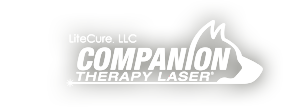Regenerative medicine is a fast-emerging branch of veterinary medicine in which the body’s own cells are used to heal and ultimately regenerate damaged tissues in acute and chronic conditions. This area of medicine includes Platelet Rich Plasma (PRP) and Stem Cell therapies.
Platelet Rich Plasma (PRP)
Platelet Rich Plasma is an autologous (self-derived) conditioned plasma that contains a high concentration of platelets. Platelets contain numerous growth factors that facilitate tissue repair and healing. These growth factors are contained in the alpha granule portion of the cell and are released from the platelet when it is activated (usually at an area of injury). A few examples of these growth factors are: Transforming Growth Factor β (TGF-β), Platelet Derived Growth Factor (PDGF), Insulin-like Growth Factor (IGF-1), Vascular Endothelial Growth Factor (VEGF), Epidermal Growth Factor (EGF) and Fibroblast Growth Factor (FGF). Roles of these growth factors range from vessel development and repair, to cellular recruitment and activation. Learn more about PRP by reading the Platelet Rich Plasma (PRP) 101 blog post.
Stem Cells
Stem cells may be classified into two groups based on their origin: embryonic and adult stem cells. For all intents and purposes, we will focus on adult stem cells. Adult stem cells are found in every tissue of the body including bone marrow, adipose tissue, skin and the liver. These cells have the ability to differentiate into any type of tissue (pluripotent) under the appropriate circumstances and can additionally activate surrounding cells to aid in wound healing and tissue repair. Additionally, stem cells can also go through several cycles of cell division/ replication without differentiating into a specific tissue type. Learn more about Stem Cells by reading the Stem Cell 101 blog post.
For more information about Companion Regenerative Therapy, please contact Companion and we will provide you with additional information about our industry-leading education and canine-validated technology.



